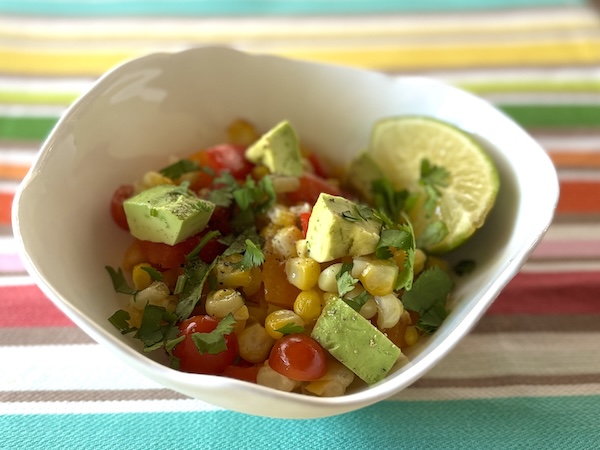
Fresh, herby sauce for meat or pasta
You can make this pesto with any number of green herbs. A while back I was a member of a local CSA, and one week we got
an herb I had never seen or heard of, perilla, also known as wild sesame leaves. After some Web research, I decided to try making perilla pesto. It is delicious! Zingy and so fresh-tasting.
Try an Asian market for this herb, which is used extensively in Korean food. Ask for wild sesame or sesame leaves. If you can’t find it, substitute fresh basil. It is a member of the mint family, Lamiaceae, for you botanists out there.
Suitable for:
all diets (note that you would not serve this with pasta for a paleo meal), and note ingredient omissions for migraine diet

Perilla pesto
Fresh herby pesto from perilla
Ingredients
- 2 cups perilla leaves can substitute basil or another green herb like parsley or cilantro
- 1/2 cup pine nuts omit for migraine diet
- 1/2 cup olive oil (extra virgin)
- 3 cloves garlic
- 1 tbsp lemon juice (fresh) plus zest from 1 lemon, omit for migraine diet
- 1 tsp sea salt kosher salt (omit for low-sodium diets)
- 1/4 tsp white pepper
Instructions
- Wash, dry, and roughly chop the perilla leaves.
- If you have raw pine nuts, lightly toast them in a dry skillet on medium heat for no more than five minutes. (If you follow a raw food diet, omit this step.) Mine came dry-toasted from Trader Joe's.
- Place all the ingredients in a blender or food processor. Blend until it makes a fine paste. Taste and adjust seasonings.
Notes
Per serving:
- 164 calories
- 5 g fat
- 1 g saturated fat
- 0 g monounsaturated fat
- 0 g polyunsaturated fat
- 0 g trans fat
- 0 g cholesterol
- 533 mg sodium (reduce sodium by using quinrizo & salt-free broth)
- 550 mg potassium
- 25 g carbohydrate
- 5 g fiber
- 5 g sugars
- 8 g protein
- 4 Weight Watchers Points Plus





Hi,
From my experience, perilla and the sesame leaves are two different plants. Perilla is absolutely lovely and is a thinner leaf with a totally different flavor. It i one my favs. You can find the leaves used in Japanese cuisine. The Korean sesame leaf is larger and a bit thicker with a different flavor, rather smelling and tasting like sesame. Very very different from each other. I have bought them both and tasted them both. I actually bought the sesame leaves in a Korean store because I thought it was the lovely perilla but its not. the leaves look similar.
Thank you, Galadriel
Thanks Galadriel. You’re right, there is quite a bit of confusion when it comes to Asian herbs. Thanks for helping to clarify my post!